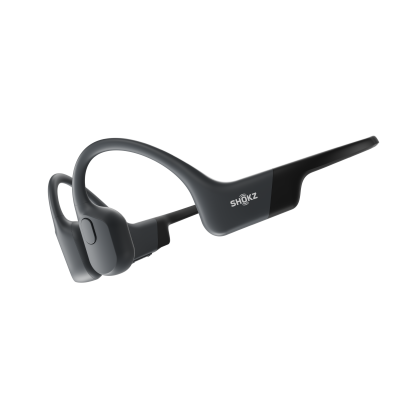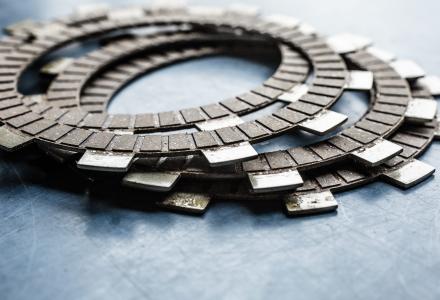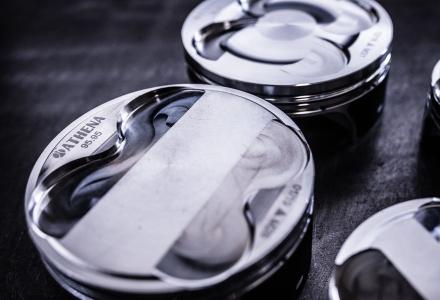Bone Conduction Headphones: What They Are and How They Work
When we think of hearing, we immediately think that our ears perceive the sounds around us. But did you know that you can also hear using the bones in your skull?
Bone conduction hearing, in fact, makes use of the human body’s natural capacity to transmit sounds via the cranial bones.
It makes the listening experience more complete and more enjoyable. Bone conduction headphones leave your ears free to interact with sounds around you without sacrificing the quality of the music you are listening to.
You’ll be able to run and train in full safety, listen to your favorite songs or making work-related calls without isolating yourself from the environment around you.
Read more to find out what bone sound transmission is and what are the best bone conduction headphones available on the Athena website.

What is “bone conduction”?
Basically, “bone conduction” refers to the transmission of external sounds to the cochlea (the innermost part of the inner ear) via the bones that make up the skull.
The human hearing system is divided into 3 parts:
- outer,
- middle, and
- inner.
The outer ear consists of the auricle, which collects and amplifies sounds and directs them down the ear canal toward the middle ear.
There, the energy of the sound waves sets in motion the ossicular chain (consisting of a hammer, an anvil, and a stirrup), which in turn causes the eardrum to vibrate. In the inner ear, by means of the cochlea, the sound vibrations are converted into nerve impulses.
However, sound is heard differently with bone conduction technology. In this case the vibrations bypass the eardrum and reach the cochlea directly. Here they are transformed into nerve impulses and conveyed to the brain, which interprets them as sounds.
Is bone conduction that makes you hear your own voice. However, it is important to know that the bones of the skull transmit sound at low frequencies. That is why your own voice sounds less loud to you than it actually is.
Let’s take a detailed look at how bone conduction headphones work. We will discuss it in the next section.

How bone conduction headphones work
So, what bone conduction hearbuds use to propagate sound are not the eardrums but the bones of the skull, in particular the bones on the sides of the face, located in front of and above the ears.
The headphones generate small vibrations on the bones and reach the inner ear directly, without passing through the ear canal and the eardrum.
Usually, bone conduction earphones consist of a band placed across the back of the head, which keeps the headphones stable when you are wearing them, and one or two plates at the end of the band, which rest on the point where the upper and lower jaw bones meet so that vibrations will be transmitted correctly.
In the case of in-ear headphones and traditional earphones, the eardrum is practically sealed off to allow sounds from the audio device to enter the ear. The result is that your ear is completely cut off from what is around you.
As we explained, bone conduction headphones work in the exactly opposite way. So, wearing bone conduction headphones, you can listen to music while leaving your ears free to hear sounds around you.
This is a big plus in terms of safety. When you are running on a road or riding a scooter, you can’t afford to lose sound contact with the outside world, can you? Cutting yourself off from outside wearing traditional earphones sounds would place you in serious danger.
Read the next section to learn what kinds of bone conduction acoustic devices you can find at Athena.
What kinds of bone conduction acoustic devices are there?
Acoustic products using bone conduction technology are usually divided into 3 categories:
- ordinary devices using bone conduction, such as headphones, speaker headphones, and earphones,
- hearing aids, and
- specialized communication devices (such as devices used to communicate underwater or in high-noise environments).
Let’s focus on products of the first kind, which are the most popular ones with people who do not want to give up listening to music or having phone calls while engaged in outdoor sports.
Advances in technology have made it possible to create a variety of bone conduction headphone models that are much lighter and feature modern design.
And the development of micro-components allowed creating acoustic devices that are both small and effective.
Are bone conduction headphones safe?
The answer is a resounding “Yes". The vibrations that are generated by the bone conduction headphones and transmitted to the cochlea via the skull bones are not harmful to your hearing health.
While traditional earphones and headphones may exert excessive pressure on your eardrums, with bone conduction headphones that does not happen.
With bone conduction technology you also avoid the damage and injury to the eardrums that often occur with traditional audio devices after prolonged listening at too high a volume.
Wearing bone conduction earbuds, you can listen to music even for considerable periods without experiencing any pain or discomfort in your ears. Nevertheless, the nerve receptors of the ears can be damaged even when you use bone conduction headphones. That is especially the case if you use the headphones incorrectly.
So, we recommend you to listen music at a moderate volume when you use bone conduction headphones.

At Athena, we are committed to offering you products of the highest quality and with proven efficiency. Visit our selection of bone conduction headphones and earphones. There, among a wide range of models selected from the best brands in the industry, you can pick the device that best fits your needs.




